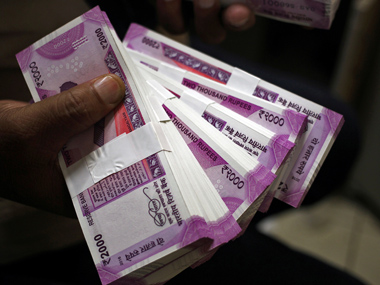The capital account is a key element of the Consolidated Fund of India, the government’s chief account. The Consolidated Fund of India is one of the three funds that constitute the Annual Financial Statement, which is tabled by the finance minister as per Article 112 of the Indian Constitution. The capital account, as the name suggests, deals with receipts and expenditures that lead to the creation or dilution of assets. Needless to say, the capital account is divided into receipts and disbursements. While the capital receipts lead to dilution of an asset, the opposite is true about capital disbursements. [caption id=“attachment_6013191” align=“alignleft” width=“380”] Representational image. Reuters.[/caption] For example: When the government disinvests in a public sector undertaking (PSU), the proceeds from the sale would be recorded under the capital receipts. This is because there has been a dilution of an asset. On the other hand, when the government hands out a loan to an entity, that would mean capital disbursement. The government can later earn interest out of the loan. The capital receipts can be grouped under three broad categories: Public debt, recovery of loans and advances, miscellaneous receipts. The public debt can further be divided into external and internal debts, while miscellaneous receipts include disinvestment in PSUs. Internal debts, or debts taken from within the country, include treasury bills, market stabilisation schemes, ways and means advance, and securities against small savings. As far as the capital disbursement is concerned, the government spends on general, social and economic services. Defence services, agricultural financial institutions and railways take a large chunk of the government’s capital expenditure. The interest that a government receives for all the loans it disburses also form a major part of the capital disbursement. A look at numbers Capital receipts The 2017 actuals for capital receipts stood at Rs 67,24,689.18 crore, while the 2018-19 Budget estimate pegged the receipts at Rs 68,11,277.39 crore. However, as has generally been the case, the revised estimate for the financial year stood at Rs 70,57,621.46 crore. The interim Budget presented in February 2019 pegged receipts at Rs 67,54,499.25 crore. Capital disbursements Capital disbursements or expenditures stood at Rs 62,79,856.80 crores in 2017. In the 2018-19 Budget estimate, expenditure increased to Rs 6515805.70 crores. In the revised Budget estimate for the financial year, the amount further rose to Rs 6693358.65 crores. In the interim Budget, the expenditure was pegged at Rs 6383766.64 crores.
Follow full coverage of Union Budget 2019-20 here
The capital account, as the name suggests, deals with receipts and expenditures that lead to the creation or dilution of assets.
Advertisement
End of Article


)

)
)
)
)
)
)
)
)



